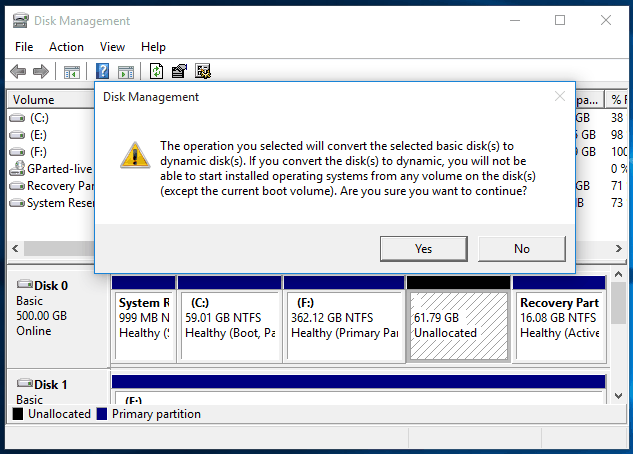



- How to create boot partition windows 10 how to#
- How to create boot partition windows 10 upgrade#
- How to create boot partition windows 10 windows 8.1#
- How to create boot partition windows 10 license#
- How to create boot partition windows 10 iso#
You may also recover data from formatted or deleted drive partitions using reliable data recovery software, such as Stellar Data Recovery for Windows.
How to create boot partition windows 10 how to#
If you install Windows 10 afterward, it will install its own boot loader and ignore your Linux system, so you’ll have to restore the GRUB2 boot loader.Do you want to create or modify a hard drive partition? Read this blog to get help on how to partition a hard drive on Windows 10. That’s the ideal way to set up any Windows and Linux dual-boot configuration - Linux will install the GRUB2 boot loader and set it up so you can choose whether to boot Linux or Windows when you boot your PC. If you want to dual-boot Windows 10 and Linux, you should install Windows 10 first and install your Linux distribution of choice afterwards. You can right-click a drive and select Rename to give it a more descriptive label, like “Windows 10” or “Windows 7.” You’ll see your other Windows drive appear with its own drive letter in File Explorer or Windows Explorer. From here, you can choose the Windows operating system you want to boot by default and control how long the operating system selection will appear before it automatically boots that default version of Windows.īoth versions of Windows use the NTFS file system, so you can easily access your files from whichever version of Windows you’re using. To switch between them, restart your computer and select your desired version of Windows in the boot menu.Ĭlick the “Change defaults or choose other options” link on this screen to change the options. You’ll now be able to choose between Windows 10 and Windows 7 or 8 when you boot your computer. Windows will finish installing normally without asking you any more questions.Ĭhoose Between Windows 10 and Windows 7 or 8 Click Next to install Windows 10 on that new partition The Windows installer will create a new partition and select it for you. By default, it will take up all the available unallocated space, so just click Apply to create a new partition using all that space. Select it and click New to create a new partition in the empty space.Ī Size box will pop up asking how big you want the partition to be. You’ll see an “Unallocated Space” option here, assuming you resized your existing Windows partition to free up space earlier. You’ll be taken to the “Where do you want to install Windows?” screen, which handles partitioning. Custom lets you install Windows 10 alongside an existing copy of Windows.
How to create boot partition windows 10 upgrade#
Upgrading would upgrade your existing Windows 7 or 8 system to the Windows 10 Technical Preview.
How to create boot partition windows 10 license#
Select your language and keyboard layout and then click “Install now.”Īfter agreeing to the license agreement, click the “Custom: Install Windows only (advanced)” installation option. Go through the Windows 10 installation process normally. RELATED: How to Boot Your Computer From a Disc or USB Drive Install Windows 10 Alongside Windows 7 or 8 If you have a Windows 8 computer that comes with the newer UEFI firmware, you’ll need to use Windows 8’s advanced boot menu to select your USB drive or DVD drive when you boot your computer. If it doesn’t, you may need to change the boot order in your BIOS. It should automatically boot into the Windows 10 installer. Leave the DVD or USB drive in your computer and reboot.
How to create boot partition windows 10 iso#
Microsoft’s Windows USB/DVD Download Tool still works well, and will let you image a Windows 10 ISO file onto a USB drive. Download Windows 10 and Boot the Installerĭownload a Windows 10 ISO file and either burn it to a DVD or make a bootable USB flash drive. You’ll probably want more than that.Īfter shrinking the partition, you can continue the process.
How to create boot partition windows 10 windows 8.1#
Microsoft says Windows 10 has the same system requirements as Windows 8, and the 64-bit version of Windows 8.1 requires at least 20 GB of hard drive space. Shrink the volume to free up enough space for your Windows 10 system. Right-click it and select “Shrink Volume.” If you have multiple partitions on your hard drive, you could also choose to resize a different partition to free up space. Locate your system partition - that’s probably the C: partition. Press Windows Key + R, type diskmgmt.msc into the Run dialog, and press Enter to launch it. Whether you’re using Windows 7 or 8, you can use the Disk Management utility to do this.


 0 kommentar(er)
0 kommentar(er)
